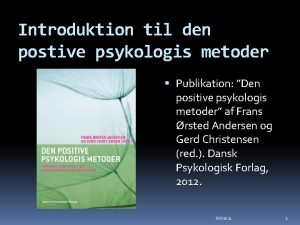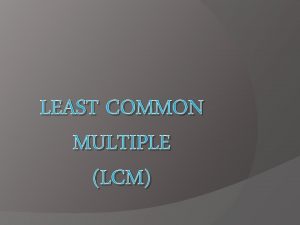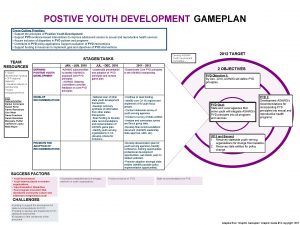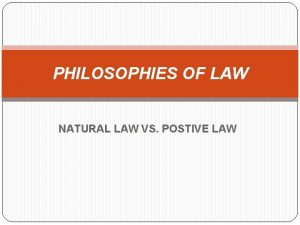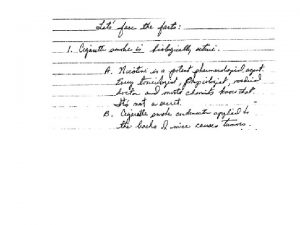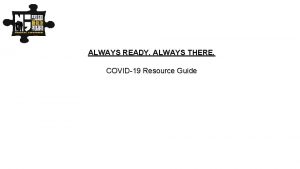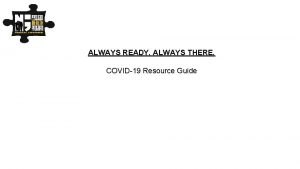ALWAYS LOOK FOR THE POSTIVE When it is










































































































- Slides: 106

ALWAYS LOOK FOR THE POSTIVE “When it is dark enough, you can see the stars. ” -Persian proverb

Diseases of Digestive System Oral cavity Esophagus Stomach Small Bowel Large Bowel Liver Pancreas Rectum Anus Chapter 2

GI system l GI tract: mouth -> anus l Accessory structures ¡Teeth, tongue, salivary glands, liver pancreas, gallbladder

Diseases Oral cavity Esophagus Stomach Small Bowel Large Bowel Liver Pancreas Rectum Anus

crown is covered by a thin veneer of enamel root is covered by a thin layer of cementum

Oral Diseases: Periodontal Disease l Periodontal Disease is plaque-induced inflammation of gums ¡ Progressive l gingivitis, gingival hyperplasia, peridontitis with vertical bone destruction, and peridontitis with horizontal bone destruction ¡ The end result is loss of tooth l Periodontal means “around the tooth” ¡ Etiology l Food particles, bacteria, saliva, rbc and other bacterial components collect around gum line and form plaque, when this hardens it forms tartar or claculus • Causes gingivits l Minerals in saliva collect in plaque and harden to form calculus (tartar) which adheres to teeth • 3 -5 d to harden • Causes bad breath • Protects the bacterial environment

Oral Diseases: Gingivitis l Gingivitis—earliest signs of Periodontal Disease ¡ Involves only the soft tissues of the gums ¡ Reversible inflammation of gums ¡ Gingival hyperplasia (may also be breed- or drug-related) ¡ Cause—accumulation of tartar on teeth l Tartar is conducive to bacterial growth l Enzymes produced by bacteria damage tooth attachment and cause inflammation

Oral Diseases: Periodontal Disease Without intervention, gingivitis progresses to: l Periodontitis—irreversible condition: ¡ Loss of gingival root attachment (receding gums) ¡ Alveolar bone resorption ¡ Loss of teeth alveolar bone

Normal Gingiva

Oral Diseases: Periodontal Disease l Periodontitis—irreversible condition: ¡ Alveolar bone resorption l Gingivitis—reversible; earliest signs of Periodontal Disease Mild tartar Mild gingivitis No bone loss more tartar (<25% loss) severe tartar (25 -50) >50% bone loss more gingivitis gum receding tooth is loose min bone loss moderate bone loss should be pulled

Oral Diseases: Periodontal Disease l Calculus builds up under gums ¡ Separates teeth from gums to form ‘pockets’, which encourages more bacteria to accumulate and grow l Bacteria secrete toxins/enzymes that cause detachment of tooth from bony socket l WBC’s invade area and release their enzymes to destroy bacteria • These enzymes also cause detachment of tooth from bone l Pockets get deeper and deeper • Weakens bone • Can cause pathologic fractures l Other sequellae ¡ Bacteria enter blood stream l Can cause micro-abscesses in liver, kidneys l Cause endocarditis on heart valves

Oral Diseases: Periodontal Disease Iatrogenic mandibular fracture resulting from excessive force extraction of a lower molar tooth

Oral Diseases: Periodontal Disease l Signs ¡ Halitosis ¡ Reluctance to chew hard food ¡ Pawing at mouth ¡ Oral pain; personality changes ¡ Sneezing; nasal discharge ¡ Increased salivation ¡ Facial swelling; tooth loss l Dx ¡ Complete oral exam ¡ Presence of tartar (plaque) on teeth ¡ Dental radiographs Application of Peridontal Probe into Interproximal Space Sulcus. Note the Probe Reads Seven Millimeters. Visual Appearance does not Always Indicate the Degree of Bone Loss

Intraoral Radiography Horizontal bone loss Maxillary Molars Standard Radiograph Unit 100 MA, 1/10 SEC, 55 KV for 25 lb. Dog Tube head set at 16” Image-Vet 70 Plus Dental Unit (AFP Imaging) Maxillary Incisors

Oral Diseases: Periodontal Disease l Rx ¡ Dental scaling l with ultrasonic scaler ¡ Root scaling/planing (below gum line) l with thin ultrasonic tip; curette ¡ Gingival curettage l with curette against inner surface of gums (gingival pocket’s diseased soft tissue inner surface) ¡ Polishing to smooth the tooth surface and prevent tartar buildup ¡ Irrigation to remove diseased tissue and plaque

Oral Diseases: Periodontal disease DOXIROBE GEL controls infection and promotes rebuilding of periodontal structures *contains Doxycycline, an antibiotic

Oral Diseases: Periodontal Disease Plaque prevention gel Applied once a week

Oral Diseases: Periodontal Disease l Client info ¡ Good oral hygiene is necessary for all pets l Brush teeth daily l Routine dental cleanings performed at veterinarian’s l Treat gingivitis early before irreversible lesions occur ¡ Extractions are sometimes necessary to clear up infections ¡ Hard, crunchy food may promote better dental health by removing tartar before it calcifies l Once it calcifies, tartar must be removed professionally http: //www. youtube. com/watch? v=qnb. JZWycdg&feature=Play. List&p=480 B 67 A 7 E 8907594&playnext _from=PL&playnext=1&index=5

Oral Trauma l Causes (many) ¡ Falls, fights (bites), burns, blunt trauma (HBC) ¡ “High-rise syndrome” in cats l Fractured: hard palate, mandibular symphysis ¡ Tongue injury from biting own tongue, dog fight, eat from tin can in garbage, FB ¡ Cats playing with needles, thread; strangulate tongue ¡ Electrical, chemical burns ¡ Gunshot wounds, fish hooks ¡ Bones lodged in teeth (Foreign body) Fx mandible—cat; HBC

Oral Trauma l Signs ¡ History or signs of head trauma ¡ Increased salivation ¡ Inability to close mouth; due to: l Pain l Fracture/dislocation l FB ¡ Reluctance to eat (same reasons) ¡ Presence of foreign object l Dx ¡ PE of oral cavity ¡ X-ray to r/o embedded FB

Oral Trauma l Rx ¡ Depends on type of trauma ¡ Control bleeding ¡ Provide supportive care l IV fluids l pain relief ¡ Insure adequate airway ¡ Repair/extract damaged teeth, fracture l Client info ¡ Like kids, if animals can get into trouble, they will l Discourage chewing on electric cords l Don’t leave caustic/toxic chemicals out l Keep pets in fenced yard or on leash when outside l Animals still eat well without entire tongue

Oral Neoplasia Relatively common in cats and dogs; malignant melanoma and squamous cell carcinoma most common l Signs ¡ Depend on location and size of growth Squamous cell ¡ More common in males carcinoma (Upper R 3 ¡ Abnormal food prehension incisor) ¡ Increased salivation Bone loss ¡ Tooth loss around lesion ¡ Oral pain rd l Dx ¡ Histology of mass ¡ X-rays to r/o metastasis ¡ Biopsy of LN to r/o metastasis Rostral maxillectomy was curative

Oral Diseases: Oral Neoplasia l Benign neoplasia ¡Papillomas ¡Epulides Papillomas

Oral Diseases: Oral Neoplasia A gingival (buccal mucosa) melanoma involving a dog's caudal mandible and temporomandibular joint region. Above: An invasive feline oral squamous cell carcinoma (courtesy of Jon Slattery)

Oral Neoplasia l Rx ¡ Surgical excision ¡ Partial removal of mandible/maxilla if bone is involved ¡ Radiation therapy ¡ Chemotherapy l Client info ¡ Px for malignant tumors is guarded even with aggressive therapy ¡ Benign lesions have good Px ¡ Animals (esp cats) with bone removed may need nutritional support (feeding tube)

Oral Diseases http: //veterinarydentistry. posterous. com/

Salivary Mucocele Accumulation of excessive amounts of saliva in SQ tissue Most common lesion of salivary glands in dogs; rarely seen in cats (following trauma) Cause is unknown (tight collar, choke chain? ? ) l Signs ¡ Slowly enlarging, nonpainful, fluid-filled swelling on neck or under tongue ¡ Reluctance to eat ¡ Difficult swallowing ¡ Blood-tinged saliva ¡ Respiratory distress

Salivary Mucocele l Dx ¡ Clinical signs ¡ Paracentesis shows thick, blood-tinged fluid l Rx ¡ Aspirate fluid ¡ Surgical drainage ¡ Remove salivary gland; insert Penrose drain x 7 d l Client info ¡ Cause is unknown; trauma may be involved ¡ Without removal of gland, excess fluid will continue to accumulate ¡ Some cases may resolve spontaneously Removal of mandibular salivary gland

Lip-Fold Dermatitis Often seen in breed with pendulous upper lips (spaniels, setters, St. Bernard, bulldogs, bassets) Constant moisture in the folds from saliva causes bacterial growth Food, hair, moisture cause irritation, erythema, and fetid odor l Signs ¡ Halitosis ¡ Collection of debris in lower lip fold l Dx ¡ Clinical signs l Rx ¡ Dental cleaning ¡ Clip hair ¡ Clean out folds (food) ¡ Diaper rash cream ¡ Sx is permanent Rx

Lip-Fold Dermatitis l Client info ¡ Keep lip folds dry (for the rest of animal’s life!!) ¡ Flush/clean lip folds l with 2. 5% benzoyl peroxide shampoo l chlorhexidine l malaseb pledgets (chlorhexidine + miconazole) ¡ Drying agents like corn starch several times a day ¡ Good dental hygiene will help prevent it

ORAL MOA CS Periodental disease Gingivitis Periodental Halothisis Trauma Falling Bleeding Neoplasia Salivary mucocele Lip fold dermatitis DX TX PROGNOSIS

Esophageal Disease l Esophageal obstruction Ingestion of nondigestible object (bones, play objects) Degree of damage depends on size, shape, time in esophagus Surgical removal is least desirable → stricture formation ¡ Signs l Exaggerated swallowing movements l Increased salivation restlessness l Retching l Anorexia l Hx of chewing on foreign objects Esophageal endoscopy

Esophageal Obstruction l Dx ¡ Endoscopy ¡ Radiography l 6 -mo old St Bernard l What is your diagnosis?

Esophageal Obstruction l 3 mo kitten l What is your diagnosis?

Esophageal Obstruction l 2 yr old cat l What is your diagnosis?

Esophageal Obstruction l 8 yr male cat

Interesting stuff l 7 mo old Pug

Esophageal Obstruction l Rx ¡ Prompt removal is important ¡ NPO x 24 h to allow for healing ¡ Resume feeding with soft foods l Client info ¡ Limit access to bones and small objects ¡ Strings and needles are hazards for cats ¡ Px is good if serious damage to esophagus can be prevented

Go through differences in small bowel vs. large bowel diarrhea

Mucosa -> muscularis -> serosa

Stomach Diseases l Acute Gastritis ¡ Commonly seen in dogs (cats to lesser degree) l Spoiled food l Change in diet l Food allergy l Infections (bacterial, viral, parasitic) l Toxins (chemicals, plants, drugs, organ failure) l Foreign objects ¡ Signs l Anorexia l Vomiting (maybe dehydration) l Painful abdomen l Hx of diet change, toxin ingestion, infection, parasites Figure 23 Typical appearance of reflux gastritis with a radial pattern of erosions on the antral folds.

l Dx Acute Gastritis ¡ Hx and PE ¡ CBC, Chem Panel to assess dehydration, metabolic imbalance, organ failure l Rx ¡ NPO until vomiting stops l 4 -6 sips of water q 1 h l Fluid therapy (SQ or IV) ¡ Gradually start feeding l Bland food (Hill’s I/D, boiled chicken/rice) ¡ Antiemetics l Maropitant (Cerenia) l Metoclopramide (Reglan) ¡ Coating agents l Sucralfate ¡ H 2 -blockers (famotidine, ranitidine, cimetidine) ¡ Proton pump inhibotor: Omeprazole ¡ Antibiotics—often prescribed, rarely needed

Acute Gastritis l Client info ¡ Avoid abrupt changes in diet l Gradually mix new food in with old (1 wk) ¡ If pet vomit 2 -3 times, NPO x 24 h; if it continues see vet ¡ Dogs and cats do not need variety ¡ Avoid objects that can be swallowed (treat like a baby)

Immune-Mediated Inflammatory Bowel Disease (Chronic gastritis, Enteritis, Colitis) Seen in cats, less common in dogs Accumulation of inflammatory cells in lining of stomach, SI, LI l Signs ¡ Chronic vomiting, wt loss ¡ Diarrhea, straining to defecate, mucus in stool l Dx ¡ Fecal to r/o parasites ¡ CBC, Chem panel, urinalysis to r/o metabolic disorder ¡ Fe. LV, FIV to r/o those diseases ¡ Endoscopy stomach SI and colon, and biopsy for definitive diagnosis

Immune-Mediated Inflammatory Bowel Disease (Enteritis, Colitis) l Rx ¡ What is the Rx for any Immune-mediated Disease? ¡ Azathioprine—immunosupressant (organ transplants) ¡ Cyclophosphamide—inhibits immune system response ¡ Sulfasalazine—a sulfa drug with anti-inflammatory/ antibacterial effects l Most effective against colitis ¡ Metronidazole ¡ Prednisone ¡ Hypoallergenic diet l Free from preservative, additives l Highly digestible protein (rabbit, lamb, duck, chicken) l Homemade diets with rice base l Some commercial diets are available

Inflammatory Bowel Disease ¡Client info l Definitive dx is through biopsy l Life-long condition (special diet, frequent medical monitoring) l Immunosupressive drugs have side-effects (PU/PD/PP, wt gain, skin/urinary infections) l Use lowest dose that provides effect

Gastric Ulceration Usually a result of long-term NSAIDs (aspirin, ibuprofen, phenylbutazone) l Signs ¡ Vary from asymptomatic to vomiting blood ¡ Anemia, edema ¡ Melena ¡ Anorexia ¡ Abdominal pain ¡ Septicemia if perforation occurs l Dx ¡ X-ray using contrast medium (Ba) to show ulceration in stomach lining (caution if perforation is suspected) ¡ Endoscopy


Gastric Ulceration l Rx ¡ Fluid therapy for dehydration ¡ NPO (as before) ¡ Coating agents/antacids ¡ Cimetidine—H 2 antagonist (↓ HCl production) ¡ Omeprazole—↓ HCl production (proton-pump inhibitor) l Client info ¡ Do not use NSAIDs without veterinary supervision ¡ Give NSAIDs with meal/antacids

Gastric Dilatation/Volvulus Primarily a disease of large, deep-chested dogs (2 -10 yrs) Dilation—gas filled; Volvulus—twisted alongitudinal axis Food/exercise? Anatomic predisposition, ileus, trauma, primary gastric motility disorders, vomiting, and stress l Signs ¡ Abdominal pain/distension ¡ Weakness, collapse, depression, nausea, salivation ¡ Increased HR, RR – may lead to arrhythmias l Dx ¡ PE shows dilation, poor perfusion (↑ cap refill) ¡ X-rays show air filled stomach- “double-bubble” ¡ ECG may show vent arrhythmia or sinus tachycardia ¡ CBC and Chem panel necessary to assess electrolyte levels

Gastric Dilatation/Volvulus • Great Dane, Weimaraner, Saint Bernard, German Shepherd, Irish and Gordon Setters, Doberman Pinscher • Reported in cats • Sharpei, Basett Hounds • normal dogs, the pylorus is located ventral to the fundus on the lateral view, and on the right side of the abdomen on the dorsoventral view.

Gastric Dilatation/Volvulus • normal dogs, the pylorus is located ventral to the fundus on the lateral view, and on the right side of the abdomen on the dorsoventral view.

Gastric Dilatation/Volvulus l Rx: hypovolemic and endotoxic shock ¡ Goals l Decompress stomach • Pass stomach tube • 18 gauge needle l Stabilize patient (fluids, electrolytes, ECG) • Rx for shock IV fluids Corticosteroids • Antibiotics l Prepare for Sx ¡ Sx—ASAP

Gastric Dilatation/Volvulus • • right lateral view of a dog with GDV, the pylorus lies cranial to the body of the stomach and is separated from the rest of the stomach by soft tissue (reverse C sign). On the dorsoventral view, the pylorus appears as a gas-filled structure to the left of midline. Free abdominal air suggests gastric rupture and warrants immediate surgery

Gastric Dilatation/Volvulus ¡Sx: Laparoscopic correction and surgical correction ¡FYI ¡Post-Op l ECG l Blood pressure l Pain management l Monitor urine output l Antibiotics l Maintain fluids (oral, IV)

Gastric Dilatation/Volvulus l Client info ¡ Avoid large meals ¡ Limit exercise after meals ¡ Feed high-quality protein diet ¡ Tack-down procedure not 100% preventative

Gastric Neoplasia Most common malignant neoplasia in dogs is adenocarcinoma; in cats lymphoma l Signs ¡ Wt loss ¡ Vomiting w/ or w/o blood ¡ Obstruction ¡ Usually seen in older animals l Dx ¡ Endoscopy and biopsy for diagnosis ¡ X-ray with Barium contrast

Gastric Neoplasia l Rx ¡ Surgery is TOC (treatment of choice) l Many tumors are too far advanced (inoperable) ¡ Chemotherapy ¡ Radiation less successful for gastric tumors l Client info ¡ Px is poor; gastric neoplasia is a fatal disease ¡ Supportive care, control of vom, good nutrition are needed for these animals

“Winning (success) takes work!” “The will to win is not nearly as important as the will to prepare to win. ” -Bobby Knight

Diseases of SI Often involves impairment of absorptive surface of SI (what is that? ) l Acute Diarrhea—one of the most commonly seen types of diarrhea ¡ Causes—(often accompanies acute gastritis) l Diet change l Stressful situations l Drug therapy ¡ Signs (Duh? ) l Acute onset l ± vomiting l Normal appearance otherwise ¡ Dx l Fecal to r/o parasites l CBC (dehydration), Chem panel to r/o metabolic diseases

Acute Diarrhea l Rx ¡ Fluids for dehydration, electrolyte imbalance (SQ, IV, PO) ¡ NPO x 24 h; water OK if no vomiting ¡ Intestinal absorbants/coating agents ¡ Loperamide—opiod receptor inhibitor that slows gut motility ¡ Antibiotics (? ) ¡ Bland diet after 24 h l Hills I/D l Boiled chicken/rice

Parasite Diarrhea l Signs ¡ Diarrhea ¡ Wt loss ¡ Poor hair coat ¡ Listlessness l Dx ¡ Fecal exam l Tx ¡ Anthelmintics for parasites: Fenbendazole/pyrantel ¡ Antiprotozoal medication for Giardia, Coccidia

Giardia

Viral Diarrhea l Parvovirus l Canine distemper virus l Coronavirus l Feline panleukopenia virus

Parvovirus Seen mainly in young, unvaccinated puppies l Signs ¡Diarrhea, usually with blood ¡Vomiting ¡Febrile ¡Anorexia, depression l Dx—ELISA (enzyme-linked immunosorbent assay) test l Rx ¡IV fluids ¡Antidiarrheal therapy ¡Antibiotics (Gram neg) ¡Keep warm ¡Anticonvulsants

Parvovirus l Client info ¡ Sick animals will infect other unprotected animals ¡ Parvo can be fatal ¡ Vaccinate for protection

Diseases of LI Function is to reabsorb water, electrolytes; store feces l Inflammatory Bowel Disease (IBD) ¡Signs l. Diarrhea with wt loss l↑ frequency of defecations, ↓ volume l. Tenesmus l↑ mucus ¡Dx l. Fecal to r/o parasites l. Chem panel to r/o metabolic causes l. Biopsy of LI wall • ↑ lymphocytes and plasma cells

Inflammatory Bowel Disease l Rx ¡ Sulfasalazine—a sulfa drug with anti-inflammatory effects l Most effective against colitis ¡ Prednisone ¡ Metronidazole, Tylosin ¡ Mesalamine—a metabolite of Sulfasalazine in LI (actions unknown) ¡ Hypoallergenic diet l Hill’s d/d, z/d, i/d l Homemade diets l Client info ¡ Treatment is often prolonged ¡ Goal of Rx is to control symptoms, not cure disease ¡ Animals with IBD need to be taken outside frequently for BM’s

Intussusception Cause usually unknown; can result from parasites, FB, infection, neoplasia l Signs ¡ Vom/diarrhea with or without blood ¡ Anorexia, depression l Dx ¡ Palpation of sausage-like mass in cranial abdomen l Rx ¡ Surgical reduction/resection of necrotic bowel ¡ Restore fluid/electrolyte balance ¡ Restrict solid food x 24 h after Sx; then bland diet x 10 -24 d l Client info ¡ Recurrence is infrequent ¡ Px depends on amt of bowel removed ¡ Puppies should be treated for parasites to prevent intussusception

Intussuception

Megacolon Uncommon in dogs, more common in cats (mostly idiopathic) Associated with Obstipation (intestinal obstruction, severe constipation) l Signs ¡ Straining to defecate l Must be distinguished from straining to urinate in male cats ¡ vomiting ¡ Weakness, dehydration, anorexia ¡ Small, hard feces or liquid feces l With or without blood, mucus Greater than length of lumbar vertebrae

Megacolon l Dx ¡ Palpation of distended colon filled with hard, dry feces ¡ Radiographs show colon full of feces ¡ Rectal palpation assures adequate pelvic opening l Rx ¡ Warm water enema l Animals can become hypothermic ¡ Manual removal under anesthesia l Mucosal surface is delicate ¡ Client info l Encourage water intake • Salt food • Always provide adequate supply l High-fiber diet

Megacolon Surgical removal Suture ends at arrows

ADVERSITY “Adversity causes some men to break, others to break records. ” -William A. Ward

Liver Diseases High regenerative capacity; damage must be severe for signs to appear Vague signs early: anorexia, vom/diar, wt loss, PU/PD, fever l Drug/Toxin induced Liver Disease ¡ Acute liver failure requires >70% of liver to be affected ¡ Susceptible to toxin ingestion (portal circulation) ¡ Some drugs have a Hx of liver toxicity l Acetaminophen l Phenobarbital l others

Drug/Toxin Induced Liver Disease l Signs ¡ Acute onset ¡ Anorexia ¡ vomiting/, diarrhea/constipation ¡ PU/PD ¡ Jaundice (maybe) ¡ Melena, hematuria, or both ¡ CNS signs (depression, ataxia, dementia, coma, seizures)

Drug/Toxin Induced Liver Disease l Dx ¡ Hx of drug administration ¡ Painful liver on palpation ¡ Chem panel l ↑ ALT (alanine aminotransferase) l ↑ Total bilirubin, ↑ blood ammonia l ↑ Serum bile acids l Hypoglycemia, coagulopathy ¡ Radiographs show enlarged liver ¡ Liver biopsy (unless coagulopathy suspected)

Drug/Toxin Induced Liver Disease l Rx ¡ Antidotes ¡ Induce vomiting ¡ Activated charcoal ¡ IV fluids ¡ Vit K for clotting ¡ Antibiotics ¡ Special diets (Hill’s k/d or u/d)

Liver Tumors Primary and metastatic tumors are not uncommon in dogs and cats Metastatic tumors are more common than primary tumors of liver l Signs ¡ Anorexia, lethargy, wt loss ¡ PU/PD ¡ Vomiting/diarrhea (? ) ¡ Abdominal distension, hepatomegaly ¡ Jaundice l Dx ¡ Anemia, usually non-regenerative ¡ Chem Panel l ↓ serum albumin l ↑ serum bilirubin, bile acids l ↓ serum glucose l Azotemia (↑ BUN, creatinine; esp in cats)

Liver tumors l Dx ¡ X-ray: Heptomegaly, Ascites (? ) ¡ Biopsy of liver ¡ Abdominocentesis may show tumor cells l Rx ¡ Surgical removal is preferred treatment l Single masses have good Px l Multiple nodules/Diffuse disease have poor Px ¡ Chemotherapy doesn’t help primary tumors; better for metastatic lesions l Client info ¡ Guarded to poor Px generally ¡ Survival time: 6 mo-3 y

Portosystemic Shunts form between portal circ and systemic circ allowing blood to bypass liver; Function of liver—detox blood Congenital or acquired l By-passing liver, allows many toxins into systemic circulation l CNS is most affected by the circulating toxins l Dx at approximately 1 year of age, however clinical signs can occur as early as 6 weeks or as late as 8 years of age

Portosystemic Shunts

Portosystemic Shunts l Signs ¡ Dumb/numb, lethargic, depressed ¡ Ataxia, staggering ¡ Head-pressing (against a wall) ¡ Compulsive circling, apparent blindness ¡ Seizures, coma ¡ Bizarre behavior (esp cats) ¡ Signs often more pronounced shortly after a meal

Portosystemic Shunts l Dx ¡ Chem panel l ↓ serum protein, albumin (liver is usually small) l ↓ BUN (liver converts ammonia → urea) l ↑ ALT (alanine aminotransferase), ALP (alkaline phosphatase) l ↑ blood ammonia (from protein) ¡ X-rays l Small liver l Contrast material • Inject into splenic vein • By-passes liver

Portosystemic Shunts l Rx ¡ Medical management seldom very successful l Low protein diet, lactulose (reduces amount of circulating ammonia) ¡ Sx l Ligation of shunt • Total ligation often causes ↑ liver BP • Partial ligation may be more practical • A second Sx can be performed after few months to close off shunt totally ¡ Client info l Px often very good following ligation l For best results, Sx should be performed before 1 y old l Collateral circulation may develop, with relapse of signs

Portosystemic Shunts • Protein restricted diet • The ideal diet should be • highly digestible (little residue reaches the colonic bacteria) • High biological value protein (high levels of branched chain amino acids and arginine and low levels of aromatic amino acids and methionine) • Protein content Dog: 14 to 17 % • Protein content Cat: 30 to 35 % • highly digestible carbohydrate as the primary source of calories

Feline Hepatic Lipidosis l Idiopathic (IHL) – cause unknown l Most common hepatopathy in cats l Obese cats of any age, sex or breed l Stress may trigger anorexia ¡Diet change, ¡Boarding ¡Illness, ¡Environmental change

IHL l Anorexia prolonged for 2 weeks causes imbalance between breakdown of peripheral lipids and lipid clearance within liver ¡Lipids accumulate in liver l Other mechanisms proposed l Early diagnosis and aggressive treatment important ¡ 60 -65% of cases => complete recovery

IHL

IHL

IHL l Clinical Signs ¡Anorexia ¡Obesity ¡Wt loss (as much as 25% of body weight) ¡Depression ¡Sporadic vomiting ¡Icterus ¡Mild hepatomegaly ¡+/- coagulopathies

IHL l Diagnosis ¡CBC – nonregenerative anemia, stress neutrophilia, lymphopenia ¡Biochem panel – Increased ALP, ALT, bilirubin, Low albumin, Increase serum bile acids ¡X-rays – mild hepatomegaly ¡US liver hyperechoic ¡Liver biopsy – severely vacuolized hepatocytes

IHL l Treatment ¡High protein, calorie dense diet ¡Feeding tube usually required l. NG tube for short term liquid diets l. Gastrostomy tube best l. Esophagostomy tube ¡Tubes can remain in place For up to 3 -6 weeks

IHL l Treatment ¡ IV fluids ¡ Metoclopramide SQ 15 min prior to feeding ¡ Monitor weekly l CE ¡ Avoid stress in obese cats ¡ Early intervention is essential ¡ Any cat that stops eating is at risk ¡ Cats do not respond well to frequent diet changes

Pancreatic Dysfunction (Exocrine) l Main function of Exocrine Pancreas → secretion of dig enzymes l Located along duodenum l Dig enzymes secreted in an inactive form to protect pancreas tissue

Pancreatic Dysfunction (Exocrine) l Pancreatitis—Inflammation of pancreas May be chronic or acute Develops when dig enzymes are activated within gland → autodigestion More common in obese animal; high-fat diets may predispose animal to it Unpredictable results; some recover well, others worsen and die ¡ Signs l Older, obese dog or cat with Hx of recent high-fat meal l Depression, anorexia, vomiting l ± abdominal pain l Shock, collapse may develop l Often seen post-holiday • Table scraps of ham, gravy, etc

Pancreatitis l Dx ¡ CBC, Chem panel l Leukocytosis l ↑ PCV (means what? ) l Hyperlipidemia l ↑ serum amylase, lipase l SNAP c. PL test l Rx ¡ IV fluids, electrolytes ¡ NPO 3 -4 d ¡ Antibiotics ¡ Butorphanol for pain ¡ Start back on low fat diet 1 -2 d after vom stops l Client info ¡ Avoid obesity/overfeeding ¡ Feed low-fat treats ¡ Px is difficult to assess

Exocrine Pancreatic Insufficiency The pancreas stops making dig enzymes May occur spontaneously (G Shep) or due to chronic pancreatitis (cats) l Signs ¡ Wt loss ¡ Polyphagia ¡ Coprophagia, pica ¡ Diarrhea, fatty stool ¡ Flatulence l Dx ¡ Normal CBC ¡ ↓ total lipids


Exocrine Pancreatic Insufficiency l Rx ¡ Supplement pancreatic enzymes with each meal l Pancrezyme l Viokase-V ¡ Low fiber diet l Client info ¡ EPI is irreversible; life-long treatment ¡ Pancreatic enzyme replacement is expensive ¡ With enzyme replacement, dog will regain weight, diarrhea will stop ¡ Must be given with every meal

Perineal Hernia Intact male dogs; atrophy of levator ani muscle; rectum herniates l Signs ¡ Reducible perianal swelling ¡ Tenesmus (feeling of full colon) ¡ Dyschezia (difficult defecation) ¡ Urethral obstruction l If bladder is herniated l Dx ¡ Rectal palpation reveals hernia sac

Perineal Hernia l Rx ¡ Stool softeners (Colace) ¡ Enemas ¡ Surgical repair l Castration l Client info ¡ Keeping stool soft may help reduce straining l True for all dogs ¡ Castration recommended testosterone is suspected as a predisposing factor

Perianal Fistula Exact etiology unknown; thought to start as an inflammation of sweat and oil glands around anus Bacteria grow well in the moist, warm region of these glands Infection invades into deeper tissues Most commonly affects G Shep (84% of dogs diagnosed) l Signs ¡ Intact male, older (>8 y) ¡ Tenesmus ¡ Dyschezia, pain on exam ¡ Fecal incontinence ¡ Bleeding, foul odor of perianal area

Perianal Fistula l Dx—PE to r/o anal sac disease/perirectal tumor l Rx ¡ Medical—usually not successful l Clip hair, keep clean l Flush with saline l Antibiotics ¡ Surgical—difficult because of nerves/blood vessels l Remove infected tissue l Cryosurgery l Laser surgery l Cautery ¡ Client info l Painful—be cautious of biting l many complications of Sx • Fecal incontinence • Anal stenosis

Perianal Gland Adenoma l Signs ¡ Intact male, older ¡ Single or multiple masses that may ulcerate l Not metastatic ¡ Pruritis in anal area ¡ Bleeding ¡ Firm nodules in perianal skin l Dx—PE, biopsy l Rx ¡ Surgical removal ¡ Radiation ¡ Cryosurgery ¡ Castration—causes regression of tumors l Client info ¡ Gently cleanse area daily with baby wipes ¡ Castration at early age helps prevent it

References l Alleice Summers, Common Diseases of Companion Animals l Dr. Jan Bellows. The Smile Book I, Common Dental Problems and Procedures. 1996 l http: //www. walthamusa. com/articles/wf 93 lec. pdf l Fossum, T. W. Gastric Dilatation Volvulus: What’s new? World Small Animal Veterinary Association World Congress Proceedings, 2009 l http: //veterinarycalendar. dvm 360. com/avhc/article. Detai l. jsp? id=650420&sk=&date=&%0 A%09%09%09&page. ID=2 l http: //www. vet. uga. edu/VPP/CLERK/west/index. php
 Look down look up
Look down look up Positive analysis
Positive analysis Walmart
Walmart Look and complete marzhan always
Look and complete marzhan always Look at activity 1 and write
Look at activity 1 and write Look at activity 1 and write
Look at activity 1 and write Activity 1 a look at the picture
Activity 1 a look at the picture En lathund för arbete med kontinuitetshantering
En lathund för arbete med kontinuitetshantering Mat för idrottare
Mat för idrottare Vad är verksamhetsanalys
Vad är verksamhetsanalys Publik sektor
Publik sektor Datorkunskap för nybörjare
Datorkunskap för nybörjare Läkarutlåtande för livränta
Läkarutlåtande för livränta Inköpsprocessen steg för steg
Inköpsprocessen steg för steg Egg för emanuel
Egg för emanuel Ministerstyre för och nackdelar
Ministerstyre för och nackdelar Stickprovsvariansen
Stickprovsvariansen Bat mitza
Bat mitza Tack för att ni lyssnade bild
Tack för att ni lyssnade bild Bästa kameran för astrofoto
Bästa kameran för astrofoto Vad är vanlig celldelning
Vad är vanlig celldelning Nyckelkompetenser för livslångt lärande
Nyckelkompetenser för livslångt lärande Myndigheten för delaktighet
Myndigheten för delaktighet Tack för att ni lyssnade
Tack för att ni lyssnade Borstål, egenskaper
Borstål, egenskaper Var 1721 för stormaktssverige
Var 1721 för stormaktssverige Personalliggare bygg undantag
Personalliggare bygg undantag Verktyg för automatisering av utbetalningar
Verktyg för automatisering av utbetalningar Tobinskatten för och nackdelar
Tobinskatten för och nackdelar Jag har nigit för nymånens skära text
Jag har nigit för nymånens skära text Boverket ka
Boverket ka Karttecken brunn
Karttecken brunn Rbk-mätning
Rbk-mätning Tack för att ni har lyssnat
Tack för att ni har lyssnat Elektronik för barn
Elektronik för barn Vad står k.r.å.k.a.n för
Vad står k.r.å.k.a.n för Cks
Cks Tack för att ni har lyssnat
Tack för att ni har lyssnat Treserva lathund
Treserva lathund Påbyggnader för flakfordon
Påbyggnader för flakfordon Frgar
Frgar Anatomi organ reproduksi
Anatomi organ reproduksi Multiplikation med decimaltal uppgifter
Multiplikation med decimaltal uppgifter Tack för att ni har lyssnat
Tack för att ni har lyssnat Humanitr
Humanitr Tidböcker
Tidböcker Rutin för avvikelsehantering
Rutin för avvikelsehantering Toppslätskivling dos
Toppslätskivling dos Presentera för publik crossboss
Presentera för publik crossboss Formuö
Formuö Bris för vuxna
Bris för vuxna Debatt artikel mall
Debatt artikel mall Skapa med geometriska former
Skapa med geometriska former Etik och ledarskap etisk kod för chefer
Etik och ledarskap etisk kod för chefer Mall för referat
Mall för referat Antikt plagg
Antikt plagg Shingelfrisyren
Shingelfrisyren Lågenergihus nyproduktion
Lågenergihus nyproduktion Steg för steg rita
Steg för steg rita Tryck formel
Tryck formel Sju principer för tillitsbaserad styrning
Sju principer för tillitsbaserad styrning Förklara densitet för barn
Förklara densitet för barn Dikter som rimmar
Dikter som rimmar Borra hål för knoppar
Borra hål för knoppar Sju för caesar
Sju för caesar Smärtskolan kunskap för livet
Smärtskolan kunskap för livet Handledning reflektionsmodellen
Handledning reflektionsmodellen Vilken grundregel finns det för tronföljden i sverige?
Vilken grundregel finns det för tronföljden i sverige? Argument för teckenspråk som minoritetsspråk
Argument för teckenspråk som minoritetsspråk Typiska novell drag
Typiska novell drag Luftstrupen för medicinare
Luftstrupen för medicinare Jätte råtta
Jätte råtta För och nackdelar med firo
För och nackdelar med firo Vishnuiter
Vishnuiter Exspektans eller expektans
Exspektans eller expektans Redogör för vad psykologi är
Redogör för vad psykologi är Strategi för svensk viltförvaltning
Strategi för svensk viltförvaltning Phép trừ bù
Phép trừ bù Công thức tính độ biến thiên đông lượng
Công thức tính độ biến thiên đông lượng Thế nào là mạng điện lắp đặt kiểu nổi
Thế nào là mạng điện lắp đặt kiểu nổi Tỉ lệ cơ thể trẻ em
Tỉ lệ cơ thể trẻ em Lời thề hippocrates
Lời thề hippocrates Vẽ hình chiếu đứng bằng cạnh của vật thể
Vẽ hình chiếu đứng bằng cạnh của vật thể Quá trình desamine hóa có thể tạo ra
Quá trình desamine hóa có thể tạo ra Các môn thể thao bắt đầu bằng tiếng đua
Các môn thể thao bắt đầu bằng tiếng đua Hát kết hợp bộ gõ cơ thể
Hát kết hợp bộ gõ cơ thể Khi nào hổ mẹ dạy hổ con săn mồi
Khi nào hổ mẹ dạy hổ con săn mồi Dot
Dot Nguyên nhân của sự mỏi cơ sinh 8
Nguyên nhân của sự mỏi cơ sinh 8 độ dài liên kết
độ dài liên kết Trời xanh đây là của chúng ta thể thơ
Trời xanh đây là của chúng ta thể thơ Voi kéo gỗ như thế nào
Voi kéo gỗ như thế nào Thiếu nhi thế giới liên hoan
Thiếu nhi thế giới liên hoan điện thế nghỉ
điện thế nghỉ Fecboak
Fecboak Một số thể thơ truyền thống
Một số thể thơ truyền thống Thế nào là hệ số cao nhất
Thế nào là hệ số cao nhất Slidetodoc
Slidetodoc Hệ hô hấp
Hệ hô hấp Các số nguyên tố
Các số nguyên tố đặc điểm cơ thể của người tối cổ
đặc điểm cơ thể của người tối cổ Cách giải mật thư tọa độ
Cách giải mật thư tọa độ Các châu lục và đại dương trên thế giới
Các châu lục và đại dương trên thế giới Thang điểm glasgow
Thang điểm glasgow ưu thế lai là gì
ưu thế lai là gì Thẻ vin
Thẻ vin Tư thế ngồi viết
Tư thế ngồi viết




















































































































